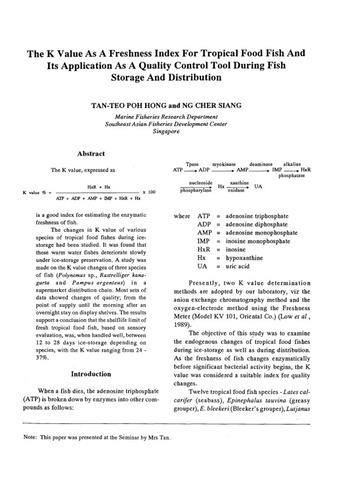The K value as a freshness index for tropical food fish and its application as a quality control tool during fish storage and distribution
Share
trừu tượng
The K value, expressed as K value % = HxR + Hx /ATP + ADP + AMP + IMP + HxR + Hx x 100
is a good index for estimating the enzymatic freshness of fish.
The changes in K value of various species of tropical food fishes during ice-storage had been studied. It was found that these warm water fishes deteriorate slowly under ice-storage preservation. A study was made on the K value changes of three species of fish (Polynemus sp., Rastrelliger kanagurta and Pampus argenteus) in a supermarket distribution chain. Most sets of data showed changes of quality; from the point of supply until the morning after an overnight stay on display shelves. The results support a conclusion that the shelflife limit of fresh tropical food fish, based on sensory evaluation, was, when handled well, between 12 to 28 days ice-storage depending on species, with the K value ranging from 24 -37%.
Suggested Citation
Tan-Teo, P. H., & Ng, C. S. (1991). The K value as a freshness index for tropical food fish and its application as a quality control tool during fish storage and distribution. In K. K. Hooi, K. Miwa, & M. B. Salim (Eds.), Proceedings of the Seminar on Advances in Fishery Post-Harvest Technology in Southeast Asia: Singapore, 6-11 May, 1991 (pp. 250-257). Singapore: Marine Fisheries Research Department, Southeast Asian Fisheries Development Center.

